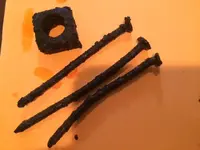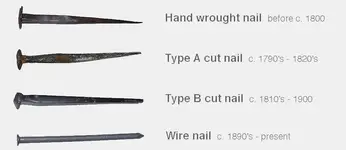Wudnut
Jr. Member
- Joined
- May 20, 2017
- Messages
- 64
- Reaction score
- 175
- Golden Thread
- 0
- Location
- Connecticut
- Detector(s) used
- Whites DFX
- Primary Interest:
- All Treasure Hunting
Went out to old cedar grove to area where i been finding nails and a ox shoe, Today. i found more nails and a square nut. I am thinking there may have been a pole barn or something similar in the area,since i been finding nails ( about 3 lbs worth)
 all found about 3 inches deep. Who knows how old they are and with the the amount of trees and dead fall. there is no way a vehicle could get in there in recent years to dump stuff. Thanks for checking.
all found about 3 inches deep. Who knows how old they are and with the the amount of trees and dead fall. there is no way a vehicle could get in there in recent years to dump stuff. Thanks for checking.
 all found about 3 inches deep. Who knows how old they are and with the the amount of trees and dead fall. there is no way a vehicle could get in there in recent years to dump stuff. Thanks for checking.
all found about 3 inches deep. Who knows how old they are and with the the amount of trees and dead fall. there is no way a vehicle could get in there in recent years to dump stuff. Thanks for checking.
Upvote
4




